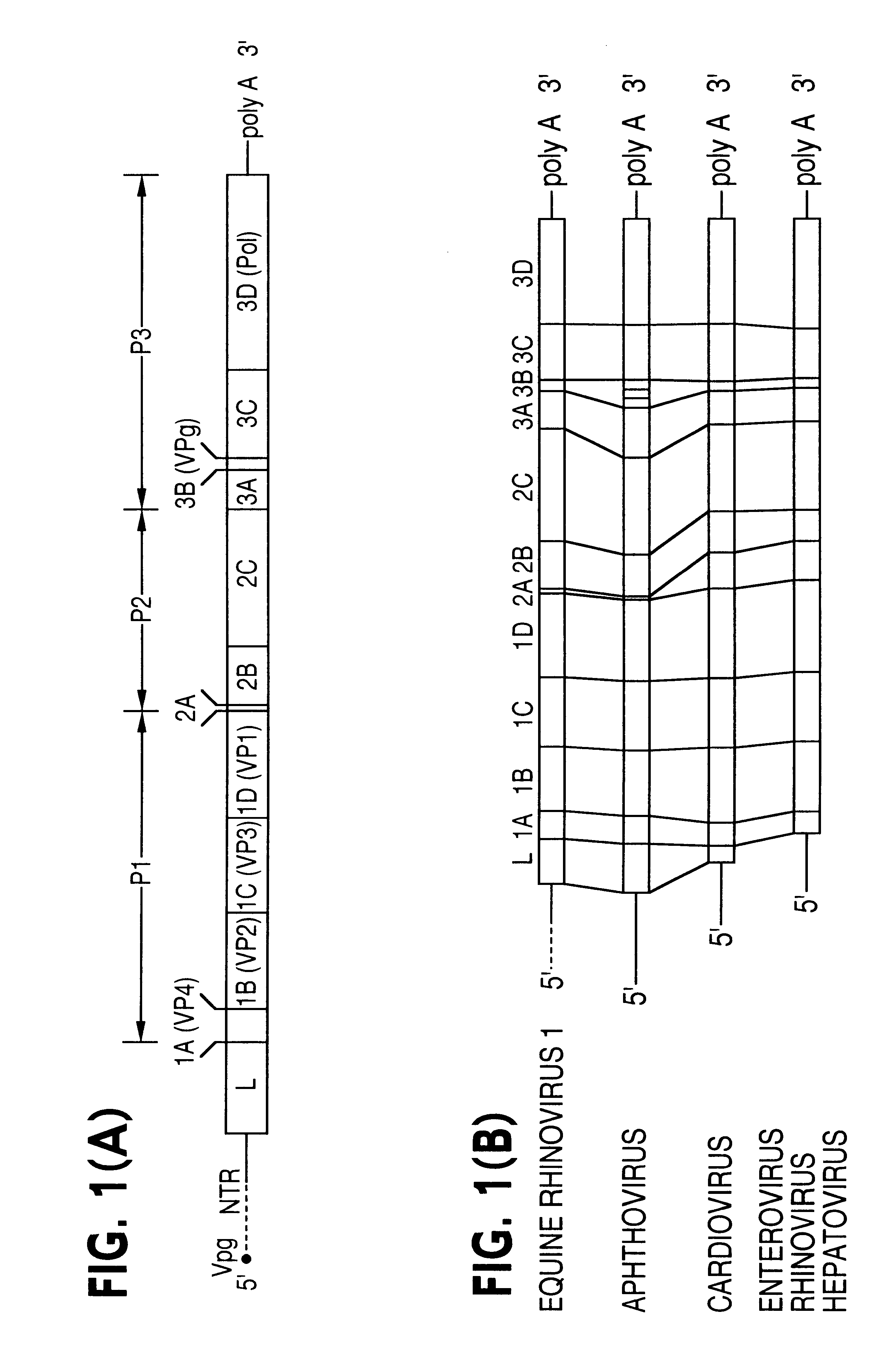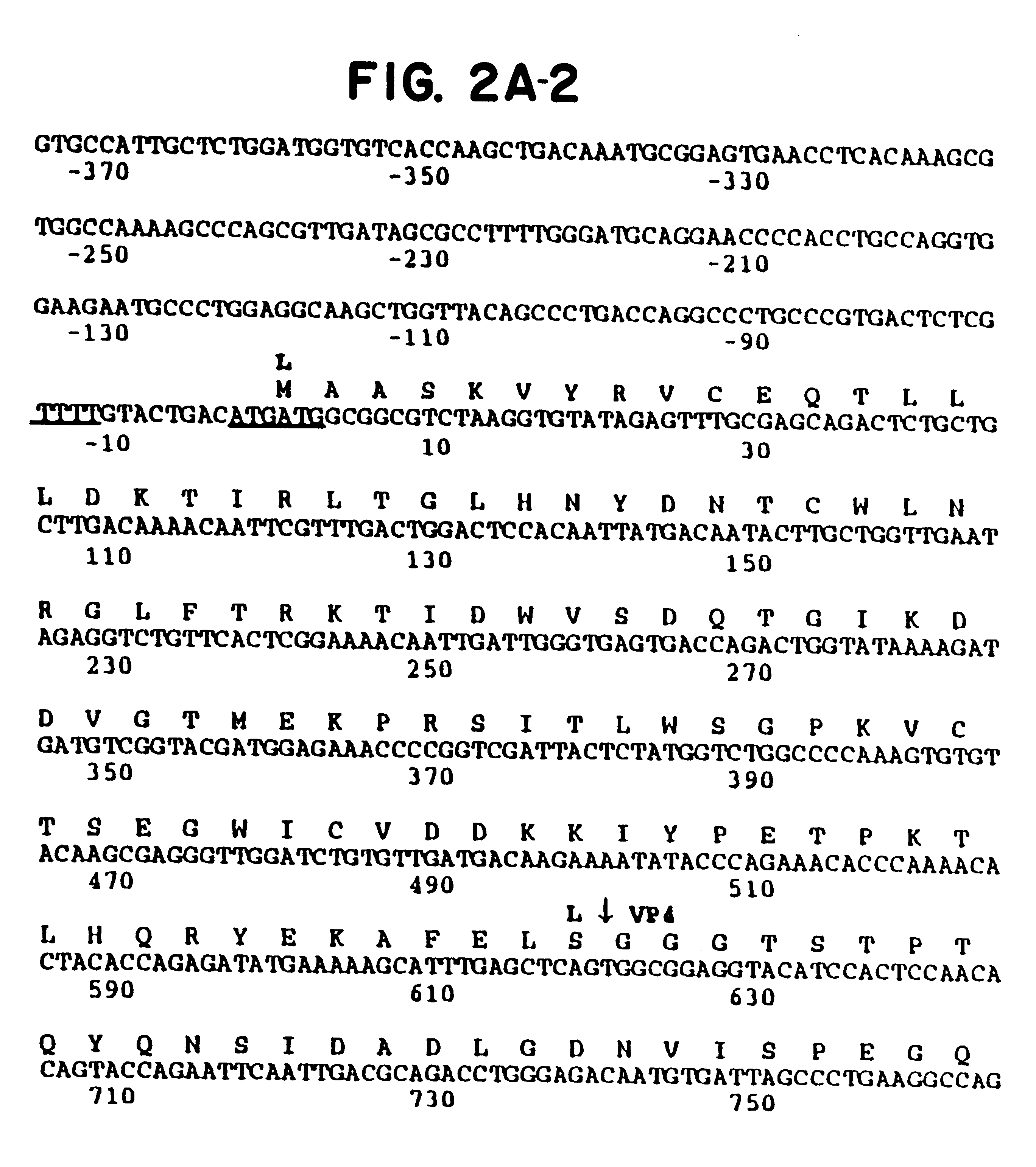Equine rhinovirus 1 proteins
a technology of equine rhinovirus and protein sequence, which is applied in the field of nucleotide and protein sequence of erh, can solve the problems of difficult primary isolation of erhv1 from clinical specimens, limited analysis, and small number of reported isolations of erhv1
- Summary
- Abstract
- Description
- Claims
- Application Information
AI Technical Summary
Problems solved by technology
Method used
Image
Examples
Embodiment Construction
The invention will now be described in detail with reference to FIGS. 1 to 6:
FIG. 1 (A) Schematic representation of the ERhV1 genome and (B) comparison of the genomic structures of picornaviruses showing the predicted proteolytic cleavage pattern of the polyprotein. The lengths of individual regions are drawn approximately to scale. The dashed line represents the unsequenced region of the ERhV1 5'-NTR.
FIGS. 2A-1-2G-2 Nucleotide and predicted amino acid sequence of the ERhV1 polyprotein (SEQ ID NOS:1 & 2). The nucleotide sequences of the 3'-NTR and part of the 5'-NTR are also shown. Numbering is from the first ATG codon that occurs in a context optimal for translational initiation (Kozak, 1989). A polypyrimidine tract upstream of the putative initiating ATG and the two pairs of in-frame ATG codons are underlined. The predicted proteolytic cleavage sites are indicated by arrows.
FIGS. 2H-1-2H-2 Nucleotide sequence of the ERhV1 5'-nontranslated region (SEQ ID NO:22). The polyC tract (do...
PUM
| Property | Measurement | Unit |
|---|---|---|
| Structure | aaaaa | aaaaa |
Abstract
Description
Claims
Application Information
 Login to View More
Login to View More - R&D
- Intellectual Property
- Life Sciences
- Materials
- Tech Scout
- Unparalleled Data Quality
- Higher Quality Content
- 60% Fewer Hallucinations
Browse by: Latest US Patents, China's latest patents, Technical Efficacy Thesaurus, Application Domain, Technology Topic, Popular Technical Reports.
© 2025 PatSnap. All rights reserved.Legal|Privacy policy|Modern Slavery Act Transparency Statement|Sitemap|About US| Contact US: help@patsnap.com



